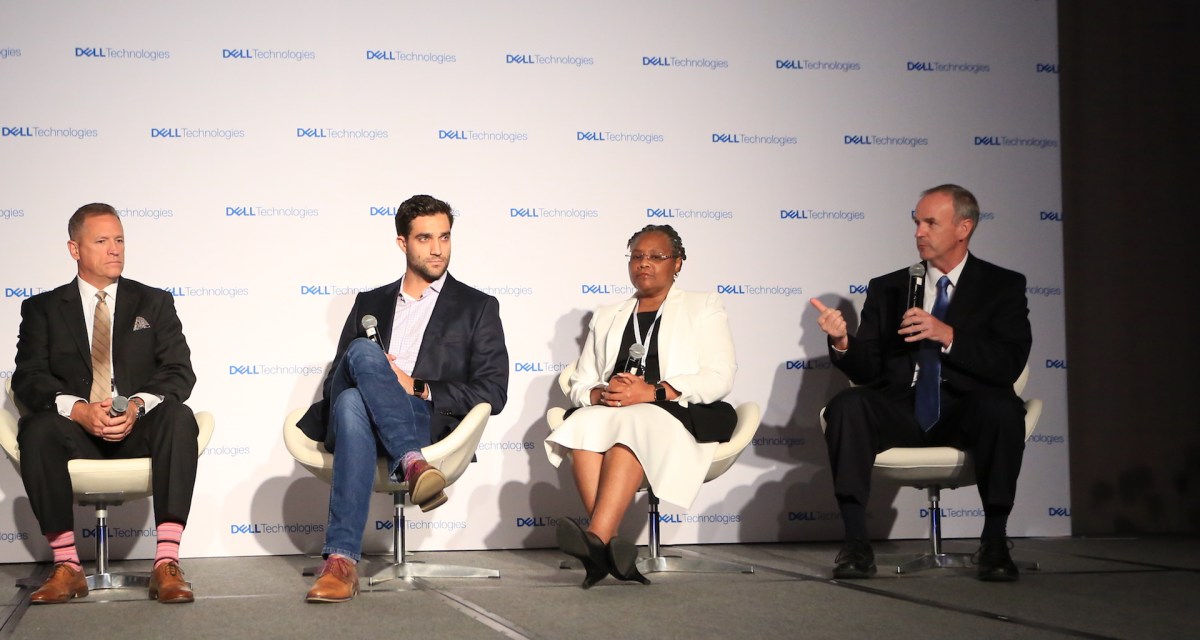Cloud Smart gets positive feedback from agency IT leaders

The Trump administration’s new Cloud Smart policy is a step in the right direction for the federal government’s journey to modernize its networks, a panel of agency IT leaders agreed Wednesday.
“I welcome Cloud Smart, but not so much because it brings about a bunch of new, innovative ideas, but mostly it codifies what I think most of us have been doing for some time,” said retired Col. Bobby Saxon, CTO for the Center for Consumer Information and Insurance Oversight at the Centers for Medicare and Medicaid Service.
Saxon said that with the arrival of Cloud Smart’s predecessor, Cloud First, in 2011, “there was a lack of early adoption or a willingness to go into the cloud because most of what is now documented in Cloud Smart is what we kind of had to figure out.”
Released in late September, the draft policy for Cloud Smart pushes agencies to continue moving to the cloud while also taking a beat to “ensure that the technology fits the mission,” Federal CIO Suzette Kent said then during a conversation with reporters.
Members of the panel at the 2018 Digital Transformation Summit presented by Dell Technologies and produced by FedScoop said Cloud Smart emphasizes the realization that agencies should be more strategic in moving to the cloud, not just acquiring it because it’s a buzzy technology.
“I think Cloud Smart really encourages strategic thinking,” said Pamela Isom, the Department of Energy’s chief data officer and deputy CIO for architecture, engineering, technology and innovation. “When you’re starting to look at and consider a cloud environment, it encourages you to look at the service providers, look at your business needs and understand what it is you really need and why cloud would be the best fit.”
Rear Adm. Ron Hewitt, director of the Office of Emergency Communications in the Department of Homeland Security, said “Cloud First was geared more toward buy versus build… and who owned the infrastructure. Cloud Smart is saying let’s worry more about mission and identify what do we really need to have a successful implementation of technology to support our business needs.”
Hewitt, a former CIO of the Coast Guard, said the new policy emphasizes the total package of a cloud migration, considering things like privacy, security, reliability and more.
“I’ve seen so many email transitions that weren’t successful because they didn’t take into account storage, privacy, records management, all those aspects,” he said. “It just helps you better, Cloud Smart, to have your requirements up front and then work with the vendor to make sure your implementation is going to be successful.”
And ultimately, Isom highlighted as a key tenet Cloud Smart, if there’s no cloud service that meets all those needs, then cloud isn’t the right fit.
“I really embrace the idea of Cloud Smart because of the encouragement of strategic thinking, strategic planning really, and looking at the service level agreements, the service level requirements you would be expecting from your cloud service providers, and then if that’s not the right fit, exploring another cloud provider. And then if that’s not the right fit, keep it at home, right, do something different,” she said.
Suzette Kent also detailed the new policy in her own keynote at Wednesday’s event. “What’s different about [Cloud Smart] is not just the commitment to leveraging leading technology but the commitment that workforce training has to be a part of those engagements, and educating our acquisition workforce is critical on that path to moving more quickly.”






